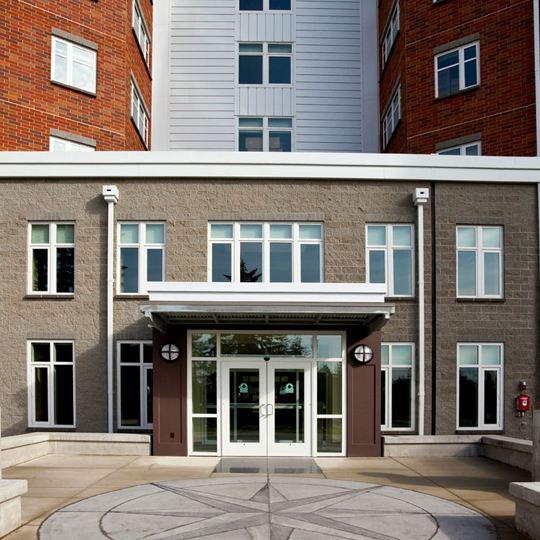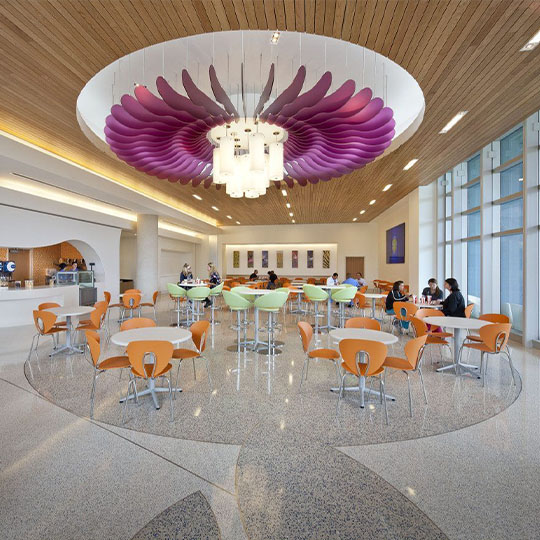Case Study
Naval Base Kitsap
Project Overview
Location
Naval Base Kitsap, Washington, USA (State)
Building
4-story, 380+ room bachelors quarters
Aeroseal Contractors
ENTEK Corporation
Contract Engineer
Washington Patriot Construction
Goal
Fix mold and IAQ issues in U.S. Navy bachelors enlisted quarters; Meet duct leakage specifications for facility renovation project
Before Aeroseal
7,289 CFM of leakage
After Aeroseal
170 CFM of leakage
Results
Sealed ductwork to 97% leakage reduction; Fixed mold and mildew issues; Achieved code compliance for duct leakage specification
U.S. Navy Base Fixes Mold, IAQ Issues Using Aeroseal Duct Sealing
Naval Base Kitsap in Washington (State) underwent a major construction project and fixed significant indoor air quality (IAQ) and code compliance issues by sealing its air duct system using Aeroseal.
During a major renovation project, NAVFAC Northwest was on a mission to solve a persistent mold and mildew problem plaguing its four-story, 380+ room bachelors enlisted quarters at Naval Base Kitsap. General Contractor Washington Patriot Construction wasn’t sure that poor ventilation was the cause, but pretesting showed that little if any of the exhaust ducts were pulling sufficient amounts of air out of the bathrooms and shower areas where the mold and mildew were most persistent.
To make matters worst, the contractors also noticed that much of the building’s ductwork was snaked throughout the structure and that ducts often turned at sharp angles, impeding the flow of air. A redesign of the ducts helped add volume to the exhaust, but not enough to meet duct leakage specifications. So they then opened up part of the wall to access and manually seal as much of the exposed duct as they could. Again results improved but not nearly enough to meet system or code requirements.
When you have masses amount of ductwork – even if it is all accessible, it would be prohibitive to seal by hand. The replacement costs, the labor costs and just finding all the leaks would make a manual approach indefensible. Aeroseal proved to be the best solution.
Scott Blair
Contract Specialist -
Naval Facilities Northwest
One of the engineers on the project suggested Aeroseal. It would allow the contractors to easily seal the 48 shafts running throughout the 88,000 sqft building. Plus, it would not require any demolition of existing walls, and the computer-controlled sealing process generates an Aeroseal Certificate of Completion at the end of each job in real-time showing pre-seal and post-seal duct leakage stats (in CFM).
Due to limited awareness/education about Aeroseal duct sealing, initial skepticism was high. Fortunately, it was discovered that, just a year prior, Aeroseal was actually used successfully on another project at the same naval base. This discovery gave administrators the data they needed to move forward with confidence.
Mark Zygmontowicz, Senior Project Manager, Washington Patriot Construction: “This technology makes sense for any building renovation in which you have issues with mold and mildew or getting moisture out of a building. I wouldn’t want to have to tear into walls and manually seal all the ductwork by hand. This was clearly a faster, more economical solution.”

Results
It took ENTEK Corporation (Washington) a little over three weeks to seal ALL shafts. When they were done, every single shaft performed well within specification. Leakage rates, originally 30% to 50%, were now down between 3% and 7%. With the ducts sealed, the renovated facility is getting the ventilation it needs to eliminate mold and mildew. The exhaust fans now run at half their earlier speeds, providing a substantial decrease in energy use.







